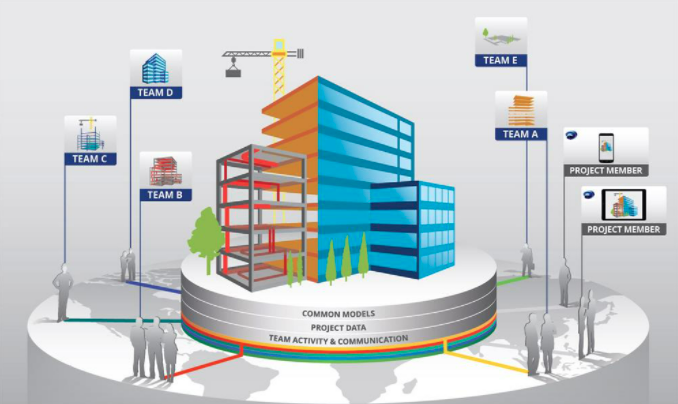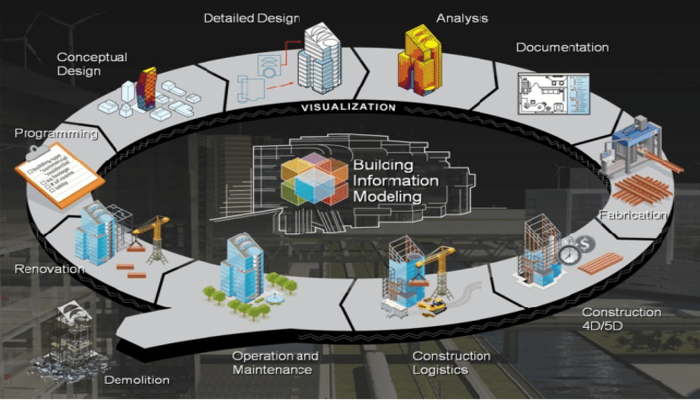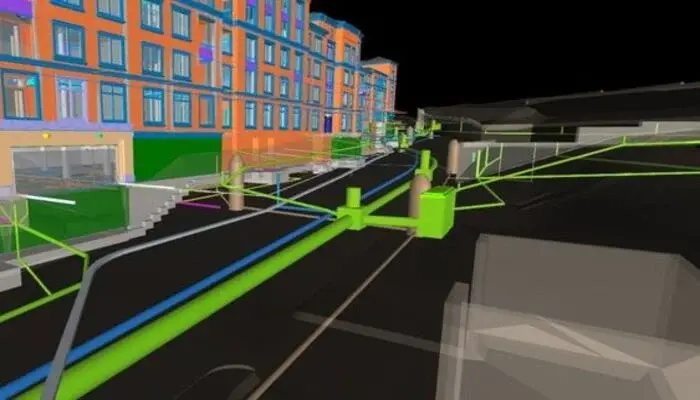
In today’s fast-paced construction industry, meeting deadlines, budgets, and quality benchmarks is more demanding than ever. In the U.S., where projects span smart cities to sustainable infrastructure, construction managers face the challenge of coordinating complex workflows and large data volumes while ensuring safety and compliance. Building Information Modeling (BIM) is transforming how these challenges are addressed.
The use of BIM in construction management is transforming how these challenges are addressed. By using intelligent, data-rich 3D models, BIM enhances planning, coordination, and execution across every stage of a project. It helps reduce rework, improve communication, and enable predictive insights for better outcomes.
The U.S. leads the global BIM market, expected to reach $15.06 billion by 2027 at a 15.6% CAGR, making BIM a core part of modern construction workflows.
For professionals aiming to become a digital-first leader, learning what is BIM construction management is no longer optional; it’s a strategic advantage for career growth.
Top 8 Benefits of BIM for Construction Managers in the USA
Let’s explore how Building Information Modeling (BIM) is reshaping the construction landscape and why every construction BIM manager in the USA should embrace this digital upgrade.
1. Better Project Visualization and Communication

Among the most evident benefits of BIM in construction management, the elevated opportunity to see the project in 3D, way before the construction process kicks off, must be mentioned. In contrast to conventional 2d drawings, BIM models provide scaled, cinematic, and full-scale visual representations of all project parts.
This will help construction managers better communicate the project goals to the stakeholders, understand possible design problems, and make premature data-supported decisions.
2. Improved Coordination and Clash Detection

BIM is at its best in clash detection. Design conflicts are bound to happen when various teams, e.g., architects, structural engineers and MEP engineers work in silos. With BIM, all models can be integrated into a single digital space.
This integration results in time savings, rework limits, and avoiding on-site conflicts, the main causes of project delays. To the construction BIM manager, this is fewer surprises, tighter control, and increased efficiency in delivering complex construction.
3. Cost Optimization and Budget Control

One of the most difficult tasks for the construction manager is to manage a budget. BIM contributes to this by assisting in proper quantity take-offs, estimation, and cost analyses. In the 5D BIM (3D + Time + Cost), managers can view the appearance of a project over time and how much it would cost at every phase.
This exposure enables more cost control, early determination of cost overruns, and more effective procurement strategies. It also eliminates a lot of wastefulness and duplication of materials. That’s how BIM helps construction managers in making decisions based on the data that positively contributes to the project's bottom line.
4. Enhanced Project Scheduling and Timeline Adherence

The construction managers tend to be blamed because of the failure to meet deadlines. With 4D BIM (3D + Time), generating a real and natural construction program would now be possible, and everything would be linked directly to the project elements.
Having a defined timeline for all project-related tasks makes it easier to manage dependencies and adjust workflows as needed. This is one of the main benefits of BIM in construction management when the projects are larger-scale in constructing public infrastructure and commercial buildings in the US.
5. Safety Planning and Risk Mitigation

Site safety is a major concern in the US construction market, where OSHA (Occupational Safety and Health Administration) Regulations keep growing. BIM enables managers in the construction industry to simulate and study the hazardous working conditions at the site before planning.
With BIM, teams can plan things like scaffolding setup, crane routes, and emergency exits before construction starts. Using the BIM model for safety planning helps reduce accidents, lower insurance claims, and build a strong safety culture on-site. It’s one of the key benefits of a good construction manager who uses modern digital tools
6. Lifecycle and Facilities Management Support

The utility of BIM is not limited to the arrival of the construction process. It is one of the most advantageous uses of BIM, representing it through an asset's life since it benefits building owners and facilities managers.
The construction managers can code the maintenance schedules, the manufacturer information, the energy consumed facts, and the asset's location information into the model. The role of BIM and construction management in the US is to create long-term value after construction, as the concepts of sustainability and lifecycle efficiency gain relevance in the US market.
7. Automation of Routine Tasks

Modern BIM software for construction management offers automation features that simplify time-consuming administrative tasks. From schedule generation and document tracking to RFIs and submittals, automation frees construction managers from manual processes.
Tools like Autodesk Revit, Navisworks, and BIM 360 allow users to automate clash reports, coordinate across cloud-based platforms, and create dynamic dashboards for stakeholder reporting. The result? Construction managers can focus more on leadership and strategy rather than repetitive paperwork.
8. Higher Career Growth and Competitive Salary

As the demand for digital skills increases, construction managers with BIM expertise are highly sought after in the US market. According to industry job boards and market research, the construction BIM manager salary in the USA ranges from $62,000 to $100,000 annually.
Organizations are looking for professionals who not only understand traditional construction workflows but can also drive digital transformation. By mastering BIM, you unlock leadership opportunities and position yourself at the forefront of smart construction.
How to Get Started with BIM as a Construction Manager?
Getting started with BIM doesn’t require you to be a software expert from day one. Instead, it’s about building an understanding of BIM principles, tools, and how they integrate into construction workflows.
Here’s a simple roadmap to begin:
- Understand the basics of BIM, including 3D modeling, clash detection, and lifecycle planning.
- Explore popular BIM tools like Autodesk Revit, Navisworks, and BIM 360 to understand their use in real-world projects.
- Enroll in structured training programs that focus on BIM use cases for civil and construction professionals.
- Work on small-scale pilot projects within your organization or as case studies to develop hands-on experience.
- Stay informed about BIM adoption mandates in the US and trends in sustainable, digital-first construction.
Accelerate Your BIM Learning Journey
Novatr’s BIM Professional Course for Civil Engineers is specifically designed to help professionals like you gain mastery in digital construction. The course includes hands-on software training, real-world projects, and industry mentorship. Whether you’re aiming to lead digital site execution or grow into a BIM leadership role in top construction management firms, you can check out Novatr’s course to learn about BIM Curriculum, relevant software tools, and guidance from industry expert to kick start your BIM career.
Why Choose US?
- Trusted by Thousands: Join 6,000+ BIM learners from over 45 countries who have successfully graduated from Novatr.
- Expert-Driven Curriculum: Designed through the analysis of 1,000+ job descriptions and rigorously vetted by 200+ global BIM experts.
- Globally Recognized Certifications: Earn certifications from both Autodesk and Novatr, showcasing your verified expertise.
- Proven Career Impact: Learners report an average salary hike of 48% after course completion.
- Loved by BIM Learners: We have 4.6+ average rating across platforms like Google and Trustpilot.
In Conclusion
The integration of BIM and construction management is redefining how projects are designed and maintained across the USA. From reducing delays and rework to improving safety and long-term asset management, the benefits of BIM for construction managers are clear and compelling. Explore the Building Information Modeling Professional Course for Civil Engineers by Novatr to get started.
You can visit the Novatr or browse insights at the resource page.
Was this content helpful to you



.jpg)






.jpg)
